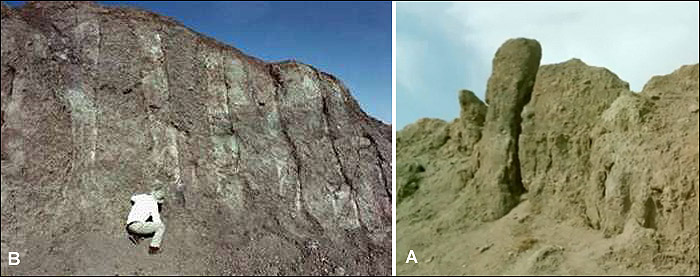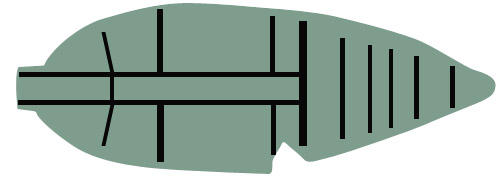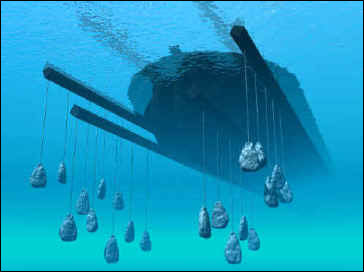In 1959, Turkish military captain Llhan Durupinar revealed an atypical form whereas inspecting aerial images of his united states of america. The sleek form, higher than a soccer box, stood out from the tough and rocky terrain at an altitude of 6,300 toes close to the Turkish border with Iran.
Capt. Durupinar was familiar with the biblical accounts of the Ark and its association with Mount Ararat in Turkey, but he was reluctant to jump to any conclusions. The region was very remote, yet it was inhabited with small villages. No previous reports of an object this odd had been made before. So he forwarded the photographic negative to a famous aerial photography expert named Dr. Brandenburger, at Ohio State University.
Brandenburger was responsible for discovering the Cuban missile bases during the Kennedy era from reconnaissance photos, and after carefully studying the photo, he concluded:
“I have no doubt at all, that this object is a ship. In my entire career, I have never seen an object like this on a stereo photo.”
That same year a group of Americans accompanied Capt. Durupinar to the site for a day and a half. They were expecting to find artifacts on the surface or something that would be unquestionably related to a ship of some kind. They did some digging in the area but found nothing conclusive and announced to the anxiously waiting world that it appeared to be a natural formation.
Most of the global media turned away from the find and it became a non-story.
In 1977 Ron Wyatt visited the site. Obtaining official permission, Ron and others conducted more thorough research over a period of several years. They used metal detection surveys, subsurface radar scans, and chemical analysis — real science — and their findings were startling. The evidence was undeniable. This was the Ark of Noah.
The Image Speak Itself.
The shape looked like hull of a ship. One end was pointed and the opposite end was blunt like a stern. The distance from bow to stern was 515 feet, or exactly 300 Egyptian cubits. The average width was 50 cubits. These were the exact measurements mentioned in the Bible.
On the starboard side (right) near the stern there were four vertical bulges protruding from the mud [B], at regular intervals, that were determined to be the “ribs” of the hull. Opposite to these, on the port side, a single rib [A] protrudes from the mud. You can see its curved shape very clearly. Surrounding it are more ribs, still largely buried in the mud, but visible upon close examination.
Remember that this object, if it is the Ark, is extremely old. The wood has been petrified. Organic matter has been replaced by minerals from the earth. Only the shapes and traces of the original wood remain. Perhaps this is why the expedition in 1960 was disappointed. They anticipated finding and retrieving chucks of wood, long since eroded.
From the position of the object in the middle of an obvious mud flow, it is obvious that the object slid down more than a mile from its original location. Geologists believe it was originally over 1000 feet higher in the mountain and encased in a shell of hardened mud. They think that an earthquake in 1948 cracked the mud shell and revealed the structure. This is confirmed by stories from the surrounding villagers who tell of its “sudden appearance” around that time.
Biblical accounts of the Ark describe it as having as many as six levels. The assumed shape of the Ark seems consistent with the bulge [C] in the middle of the object. In fact, as we will soon learn, radar scans of the structure suggest that this bulge is the collapsed debris of these levels.
Although most people think of the Ark as being rectangular, that only applies to the top decks. The sleek shape of the hull is necessary to enable the huge ship to remain stable in the water and survive tremendous waves.
High Imaging Radar
The human eye needs to see reflected light to recognize an object. To visualize what remains below the earth, scientists use microwaves which can penetrate the ground and bounce back when they hit something solid.
This technique is commonly used to locate oil and other minerals. Called Ground Penetrating Radar (GPR), the apparatus us made from an antenna that transmits, then listens to receive the “echo” and prints the result on a piece of paper.
The delay and strength of this echo tell the geologists how solid and at what depth the objects are under the earth.
“This data does not represent natural geology. These are man made structures. These reflections are appearing too periodic… too periodic to be random in that type of natural pace.” – Ron Wyatt of SIR Imaging team
Several miles from the location of the Ark, huge stones were discovered, some standing upright while others lying on the ground. These stones, weighing many tons, have holes carved in them. Scientists have determined that they were anchors and the holes would have been their attachment to a ship with hemp rope.
“And the Ark rested in the seventh month, on the seventeenth day of the month, upon the mountains of Ararat. And the waters decreased continually until the tenth month: in the tenth month, on the first day of the month, were the tops of the mountains seen.” – Genesis 8:4-5
The Gilgamesh Epic (650 BC) gives Mt. Nisir as the landing place of the Ark. The local name for the town where the Ark was found is Nasar.
The annals of Ashurnasurpal II of Assyria (833-859 BC) places it south of the Zab river (correct).
Theophilus of Antioch (115-185 AD) said the Ark could be seen in his day in the Arabian mountains. Later Church Fathers also mention the Ark as late as the mid 7th century.
In the 13th century, Willam, a traveler, stated for the first time that Mt. Masis was the Ark location (present-day Mt. Ararat).
The large anchors would were suspended from the keel of the ship. This was once a typical observe amongst historic mariners to stabilize a heavy ship and be sure that the bow is at all times going through the on-coming waves. A “high heavy” ship, such because the Ark, may simply be capsized by way of a wave coming near from the facet. That is but additional proof that Noah’s Ark was once a fact and that it has certainly been present in Turkey.
 Blog For Noob Random thought of a Noob Blogger
Blog For Noob Random thought of a Noob Blogger

















